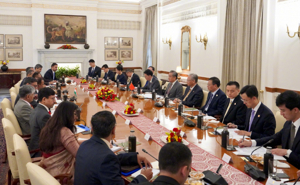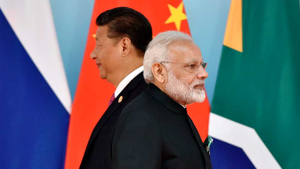In 2025, China-India Relations 2025 are being re-shaped by a blend of renewed diplomacy, trade recalibrations, and lingering strategic frictions. After years of tension exacerbated by the 2020 Galwan valley clashes, the two Asian powers are cautiously exploring normalization — yet distrust and competition still loom large. China-India Relations 2025
Recent Milestones & Signals of Thaw China-India Relations 2025

One of the most visible developments in China-India relations in 2025 is the decision to resume direct commercial flights between select Indian and Chinese cities, ending a hiatus of about five years. India confirmed that flights would start late October, with carriers such as IndiGo initiating service between Kolkata and Guangzhou, followed by Delhi–Guangzhou routes. China’s foreign ministry described this step as a “positive move” reflecting the mutual will to restore ties. China-India Relations in 2025
Economically, China has also signaled greater openness to import Indian products, especially in sectors where India has competitiveness. As the two countries seek to reconfigure supply chains in the wake of global trade disruptions, both business communities are watching whether such gestures translate into reduced trade barriers.
Another symbolic move is the resumption of the Kailash Mansarovar pilgrimage, suspended for years due to border tensions, which India and China agreed to revive in 2025. This cultural and religious exchange is part of broader efforts to rebuild people-to-people ties. China-India Relations in 2025
Diplomatically, a more assertive phase began with the leaders’ meeting in Tianjin on the sidelines of the SCO summit on 31 August 2025, marking Prime Minister Modi’s first visit to China in seven years. The two sides declared that India and China should not see each other as rivals but as “partners in development” — a rhetorical shift intended to set a new tone. China-India Relations in 2025
Persistent Challenges & Strategic Fault Lines China-India Relations 2025

Despite these positive gestures, China-India relations 2025 are far from being smooth or fully normalized. A core issue remains the border dispute along the Line of Actual Control (LAC). The 2024 India-China Border Patrol Agreement, which aimed to de-escalate tensions and restore certain patrol rights, is still under strain. Even as the agreement sets the framework for reduced confrontation, both sides remain vigilant over troop deployments, patrolling patterns, and infrastructure build-ups along disputed sectors. China-India Relations 2025
Another structural obstacle is the trust deficit. India remains wary of China’s broader strategies in South Asia, particularly its influence over neighboring countries like Pakistan, Nepal, and Sri Lanka. China’s increased outreach in India’s neighborhood is often viewed in New Delhi as attempts at strategic encirclement.
Economic imbalances continue to pose challenges. India maintains a significant trade deficit with China, and the reliance on Chinese inputs for key sectors (such as electronics, critical minerals, and machine tools) makes India vulnerable. Moreover, policy decisions on dual-use technologies, export controls (especially on rare earths and critical components), and regulatory barriers remain contentious points.
Lastly, global geopolitics adds further complexity. The U.S. has ramped up tariff pressures, pushing India to reconsider its strategic alignments. In response, India may view enhanced engagement with China as a hedge against economic pressures from the West, complicating the trilateral balance.
Strategic Outlook & What to Expect China-India Relations 2025

Going forward, the trajectory of China-India relations in 2025 will likely follow a “managed rivalry + select cooperation” model. Rather than grand breakthroughs, we can expect incremental progress.
- Institutional engagement revival: Diplomatic, military, and bureaucratic channels such as foreign minister exchanges, border negotiation mechanisms, and confidence-building dialogues are expected to be more active.
- Trade and supply chain recalibration: Both nations may explore joint ventures in manufacturing, green energy, and technological supply chains, though China will continue to maintain a cautious upper hand given its existing scale and technological lead.
- Neighborhood diplomacy balancing: States in South Asia will be battlegrounds of influence. India will intensify efforts to counter China’s strategic encroachment, while China will seek to embed economic influence in the region.
- Strategic constraints: Any major reversal remains unlikely unless provoked. Indian public opinion and defense establishments still hold skepticism about China’s intentions, limiting the depth of cooperation.

